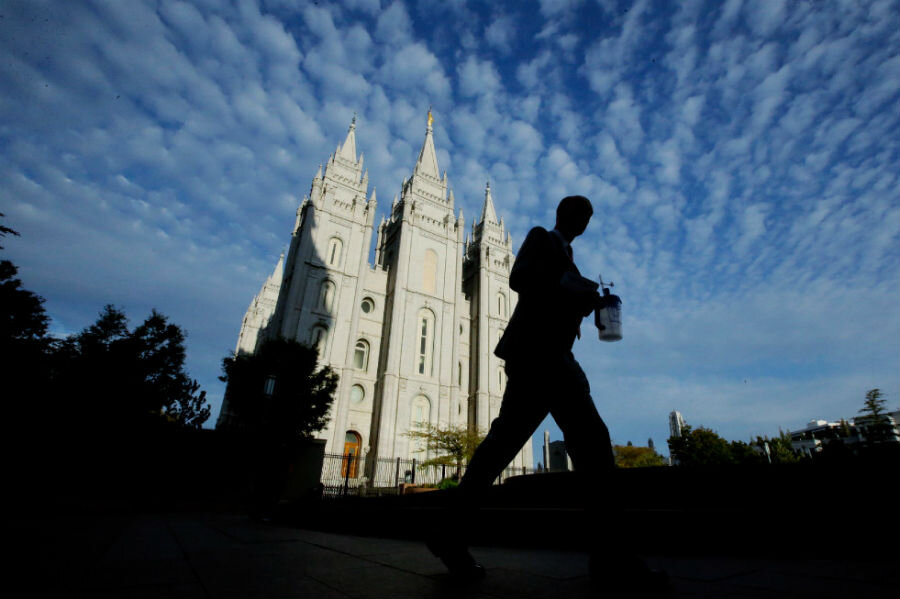New temple highlights Mormon church growth, bucking national trend
Loading...
At a time when many Christian denominations are experiencing declines in membership in the US, one sect's numbers have continued to grow: the Church of Jesus Christ of Latter-Day Saints, commonly known as the Mormon church.
Granted, the rate of growth has slowed in recent decades, recently hitting its lowest level in more than 70 years. But the steady increase still marks a significant contrast to many other denominations, as fewer and fewer Americans choose to identify with an organized religion.
The first Mormon Temple in Connecticut, set to open this week, is the latest reflection of expansion for the Church of Jesus Christ of Latter-Day Saints. It is only the second in New England, joining one in the suburbs of Boston.
"Now I'm very excited that there is a temple right here," Drucila Maldonado, a member of the church, told the Associated Press. "It's so much closer for me and my three children, compared to the 2 ½-hour drive to Boston."
Maldonado had made the trip every Saturday in lieu of a closer temple, which hosts different services than the local meetinghouses where weekly worship takes place. Like all Mormon temples, church members may only attend once granted a temple recommend from their bishop.
The overall downward trend in church membership may reflect a decline in Americans' confidence in institutions such as the church, particularly among young people: just 41 percent of respondents to a 2016 Gallup poll said they had a great deal or quite a lot of trust in organized religion, compared to 57 percent 20 years prior.
According to a Gallup poll published in December 2015, 75 percent of Americans identify with a Christian sect of some kind. However, that number had dropped from 80 percent in 2008, a rapid decline for a country dominated by Christian Protestantism since before it had even declared its independence from Britain in 1776. Younger generations form the largest concentration of those without a formal religious identity in the US today, indicating that the downward trend in traditional religion is likely to continue over their lifetimes.
This drop stands in stark contrast with statistics posted on the Church of Jesus Christ of Latter-Day Saints' official website, which declares a membership of over 15.6 million church members worldwide, in more than 30,000 congregations. As of 2011, 2 percent of American adults say they identify as Mormon.
While far from the membership levels of older religions such as Catholicism, which boasted over 1.2 billion members worldwide in 2013 and roughly 81.6 million American members as of 2015, the church's growth is especially impressive considering its relative youth. The Church of Jesus Christ of Latter-Day Saints was formally organized in 1830 by Joseph Smith, who published the Book of Mormon, saying he had transcribed it from golden plates he discovered buried in upstate New York.
After decades of dramatic growth in the twentieth century, the church's growth rate has slowed in the past 25 years, Religion News Service reported this spring; recently, it hit 1.7 percent – the lowest rate since 1937. But that dip is the result of intentional shifts in outreach and baptism, Matt Martinich, the founder of the LDS Church Growth blog, told the publication.
"The church in the 1980s and 90s had pretty poor standards for baptism, and changing that has also been a huge aspect of why growth has slowed," Mr. Martinich said. "Low qualifications for baptism resulted in a lot of converts who didn’t come to church and didn’t contribute much."
In response, the church reorganized its strategy for reaching out to potential converts, establishing "centers of strength" in cities around the world: starting with a single congregation, waiting for it to stabilize, and then expanding, as Martinich told the Salt Lake Tribune in 2014. The policy may slow down growth, but could help guarantee that new members have the support they need to stay involved in church life.
In Connecticut, where the newest temple will be dedicated in November after an open-house period, the building will serve roughly 27,000 congregants.
"It's a tremendous amount of enthusiasm and excitement among the members of our church for what we will have available to us shortly," Larry Wilson, the executive director of the Church's temple department, told NBC Connecticut.








